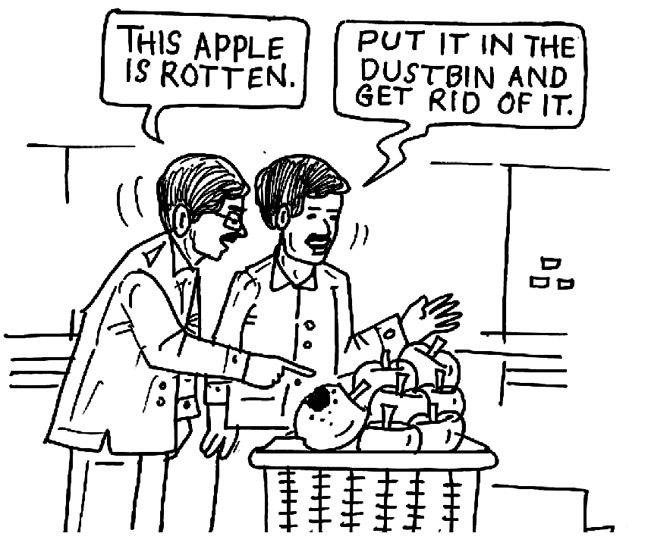A new handbook for students by two Delhi-based memory trainers offers techniques and visual tools for retaining information, from school syllabi to competitive exams

The authors' visual cue for remembering Brussels (brush) as the capital of Belgium (bell + gym). Illustrations/Excerpted from The Ultimate Memory Handbook for Students (Penguin Random House India)
Nothing that we came across in our school textbooks could convince us in the favour of rote learning. History was like a fascinating story, telling us how we got where we are. So, the many dates it came peppered with seemed a fitting part of the plot. The intriguing etymology of biological terms justified why they were such a mouthful in the first place. Mathematical formulae, too, were all right, for knowing one rule was the key to solving countless problems. But then we would stumble on obsolete chapters, like the one on the difference between flatbed and drum plotters, or the metal reactivity series in chemistry and wonder if there was a way to find some logic to them, so we could remember the information without making failed attempts at mugging it up.
ADVERTISEMENT
The Ultimate Memory Handbook for Students (Penguin Random House India) by international memory trainers Aditi and Sudhir Singhal aims to provide that conduit between conceptual understanding and retention that translates effectively on to the answer sheet. "We found that in today's education system, you don't just need to grasp a concept but also memorise a lot of information, and whatever you can recall and pen down in that limited time will determine your success in an exam," say the Delhi-based authors, referring to both, school-based and higher level competitive examination patterns.

A visual cue to remember the meaning of the word putrid, by forming connections and word associations that point in the direction of its definition
The book highlights the ability of the brain to retain anything, if trained well. Based on their decade-long experience of conducting workshops in schools as mathematics educators, the authors offer practical tips and techniques using over 300 examples to help students of all age groups, who can read and appreciate the techniques, learn an array of topics and themes, from the periodic table, trigonometry, multiplication tables, history dates, and meanings of words to countries and their capitals.

Guinness World Record holders for conducting the largest maths class, helping 2,312 students memorise multiplication tables up to 99, the authors recommend thinking of a rhyming word for every number — in this case, eight (plate) X three (tree) = twenty (plenty) four (doors) — and then keeping in mind an image to go with it
"Understanding forms the basis of all learning, but what do you do for things like why calcium oxide is called quicklime while calcium hydroxide is called slaked lime?" says Aditi, stating their three laws of memory: association, imagination and ridiculous thinking. To illustrate her point, she says, "The chemical formula for calcium oxide is CaO. Now, try to read the formula phonetically as 'cow'. Next, visualise a cow drinking lime water very quickly. It's a ridiculous story, but it will do the trick."

Sudhir and Aditi Singhal
Sudhir explains the idea further. "It is natural for the mind to think in terms of pictures. Which is why, you remember advertisements with striking imagery years later. So why not create a mental movie of which you are the scriptwriter and director?" he says.
Isn't retaining all these visual cues across subjects a challenge by itself, we ask. For this, the authors have dedicated a chapter to a revision plan that recommends going back to the matter, first within 24 hours, and later, within a week.
And that brings us to our final question on whether the focus on retention would compromise the actual understanding of concepts. "Memory techniques are meant to complement the learning process. Visualisation is easier only if you understand the information first," Aditi clarifies. "Only when the two go hand in hand is the registration of facts deep-rooted."
Catch up on all the latest Crime, National, International and Hatke news here. Also download the new mid-day Android and iOS apps to get latest updates
 Subscribe today by clicking the link and stay updated with the latest news!" Click here!
Subscribe today by clicking the link and stay updated with the latest news!" Click here!







